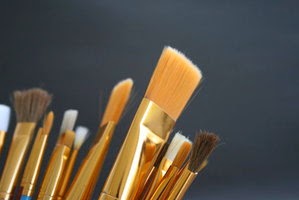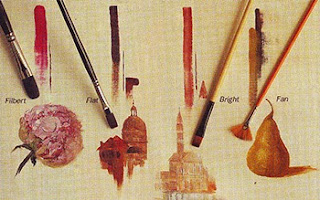Advertisement
Outside-The-Box-Learn-From-The Master
 I’m a dedicated wildlife artist, painting mostly North American birds and mammals, because I’m fascinated with these creatures. Great subjects can be found almost anywhere, and they’re just waiting to be painted a sparrow sitting on a window ledge, a turtle sunning on a log or a quail running in the brush. But despite the recurrence of my subjects, I make my paintings stand out from the others in my genre (and I never get bored with them) because I allow myself to go beyond the usual painting formats and explore new areas of the picture.
I’m a dedicated wildlife artist, painting mostly North American birds and mammals, because I’m fascinated with these creatures. Great subjects can be found almost anywhere, and they’re just waiting to be painted a sparrow sitting on a window ledge, a turtle sunning on a log or a quail running in the brush. But despite the recurrence of my subjects, I make my paintings stand out from the others in my genre (and I never get bored with them) because I allow myself to go beyond the usual painting formats and explore new areas of the picture.
Giving my wildlife paintings an odd size brings an added vitality to the subjects, and it makes them not only more exciting to paint but more interesting to view as well. It challenges me as an artist to be more creative in relating the background to the center of interest. After all, a painting size of 61/2 x 291/2 would challenge almost anyone’s creativity! I’ll show you how I go through the process of searching for the right format, and then how I paint within these new parameters, and with this I hope you’ll begin to expand your painting horizons, too.
A Different View
From the window of my studio I often see nuthatches (small, tree-climbing birds) moving from limb to limb and clinging to tree trunks-even hanging upside down. The acrobatic subject of A Different View (watercolor 32x11) was perfect for painting in a tall format, and I emphasized this with the strong vertical shapes of the tree trunk and branch. I used the negative space of the background and the delicate texture of the lichen to further accentuate these shapes.
Exploring the Possibilities
Before placing any paint on the paper, I like to take the time to explore some of the different formats that can be used with each subject. Does the center of interest lend itself to a tall vertical painting, a long horizontal one or a traditional square one? For wildlife, the clues to answering this question are usually in the creature’s habitat. A bird may be perched at the end of a long and complex branch, or atop a curiously twisting tree trunk.
A mountain lion may be resting beside a variety of bushes or a stream full of beautiful reflections. Often there are natural lines in the environment that I can use to guide the viewer’s eye toward the painting’s center of interest. Unless the right format comes to me immediately, I’ll make pencil sketches that try out a variety of shapes before I settle on the one I’m going to stick with.
 My approach for creating oil portraits shares several similarities with my watercolor work; for example, I use a similar palette for both-yellow ochre, cerulean blue and alizarin crimson (substituted for rose madder), to which I may add cadmium red and ivory black; However, there are four important differences: In oil, I deal more with shapes than lines,I Work dark's to light, my color applications are opaque rather than transparent and I don't use the progression of three key techniques that I use for Watercolor.
My approach for creating oil portraits shares several similarities with my watercolor work; for example, I use a similar palette for both-yellow ochre, cerulean blue and alizarin crimson (substituted for rose madder), to which I may add cadmium red and ivory black; However, there are four important differences: In oil, I deal more with shapes than lines,I Work dark's to light, my color applications are opaque rather than transparent and I don't use the progression of three key techniques that I use for Watercolor.














